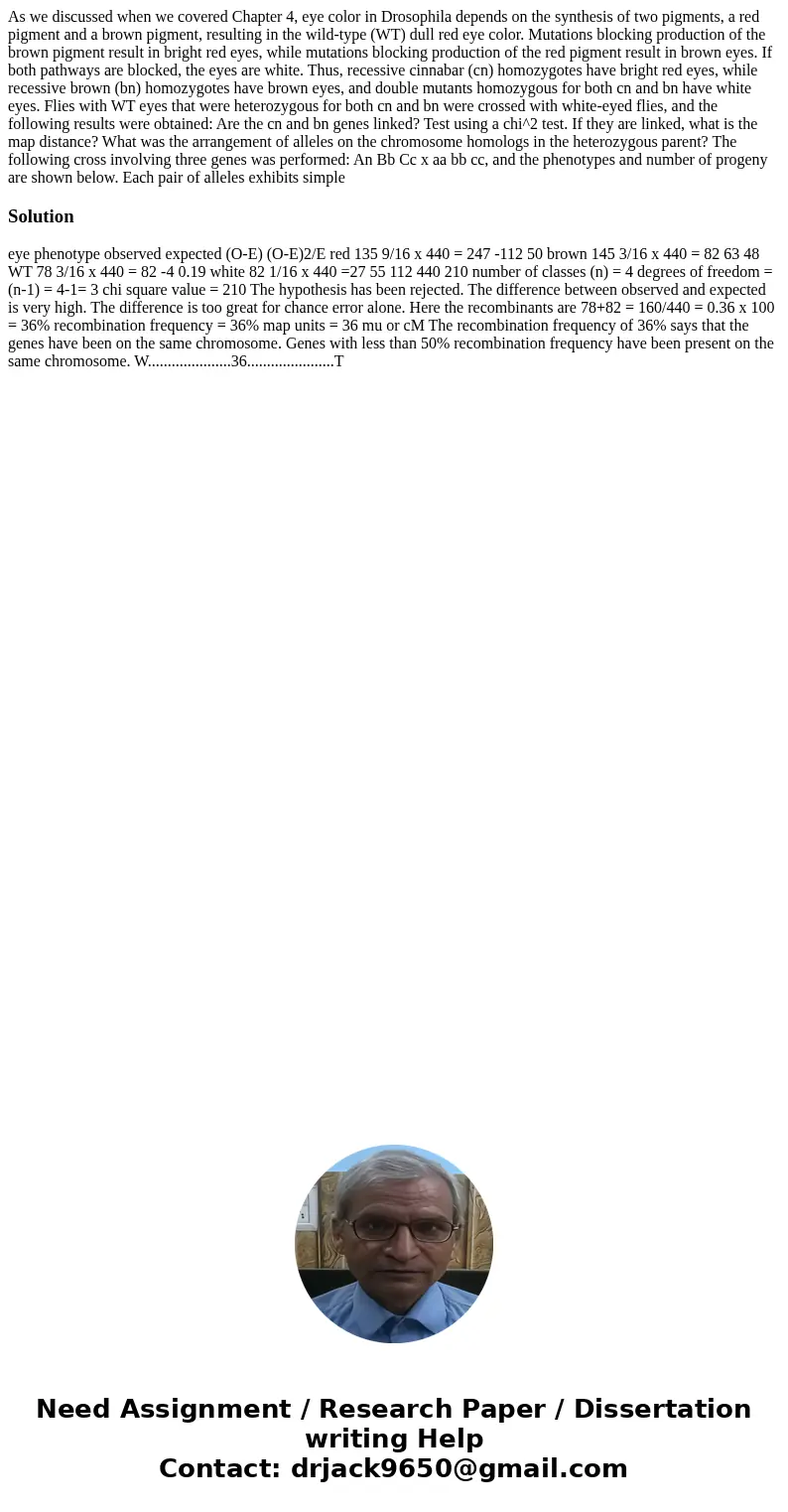As we discussed when we covered Chapter 4 eye color in Droso
As we discussed when we covered Chapter 4, eye color in Drosophila depends on the synthesis of two pigments, a red pigment and a brown pigment, resulting in the wild-type (WT) dull red eye color. Mutations blocking production of the brown pigment result in bright red eyes, while mutations blocking production of the red pigment result in brown eyes. If both pathways are blocked, the eyes are white. Thus, recessive cinnabar (cn) homozygotes have bright red eyes, while recessive brown (bn) homozygotes have brown eyes, and double mutants homozygous for both cn and bn have white eyes. Flies with WT eyes that were heterozygous for both cn and bn were crossed with white-eyed flies, and the following results were obtained: Are the cn and bn genes linked? Test using a chi^2 test. If they are linked, what is the map distance? What was the arrangement of alleles on the chromosome homologs in the heterozygous parent? The following cross involving three genes was performed: An Bb Cc x aa bb cc, and the phenotypes and number of progeny are shown below. Each pair of alleles exhibits simple
Solution
eye phenotype observed expected (O-E) (O-E)2/E red 135 9/16 x 440 = 247 -112 50 brown 145 3/16 x 440 = 82 63 48 WT 78 3/16 x 440 = 82 -4 0.19 white 82 1/16 x 440 =27 55 112 440 210 number of classes (n) = 4 degrees of freedom = (n-1) = 4-1= 3 chi square value = 210 The hypothesis has been rejected. The difference between observed and expected is very high. The difference is too great for chance error alone. Here the recombinants are 78+82 = 160/440 = 0.36 x 100 = 36% recombination frequency = 36% map units = 36 mu or cM The recombination frequency of 36% says that the genes have been on the same chromosome. Genes with less than 50% recombination frequency have been present on the same chromosome. W.....................36......................T
 Homework Sourse
Homework Sourse